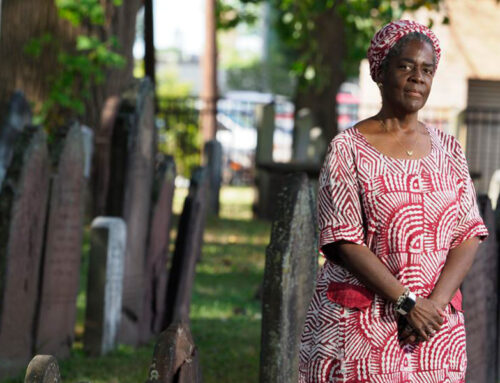Black cemeteries with unmarked graves hold mystery, history volunteers work to unlock
Sometimes, it’s not books or monuments that provide the history of African Americans. Much of it can be found underground.
These repositories of the past are African American cemeteries, the segregated resting places for freed and enslaved Africans. Some can be found relatively easily. Others have been obscured.
It is the Old First Cemetery, behind Siloam Hope First Presbyterian Church in Elizabeth, New Jersey, where the pastor is leading a project to build a memorial to remember enslaved and freed people buried there in unmarked graves.
It is the African American Cemetery alongside Interstate 95 in Rye, New York, where soldiers who fought for this country from the Civil War to World War II are interred.
In that same company: Lebanon Cemetery in York, Pennsylvania, where descendants of those buried there are fighting to preserve the grounds as they try to overcome legislative hurdles, and Mount Zion Cemetery in Wilmington, Delaware, where legendary jazz trumpeter Clifford Brown rests in peace. It had fallen into disrepair before volunteers spent years restoring it to some of its original glory.
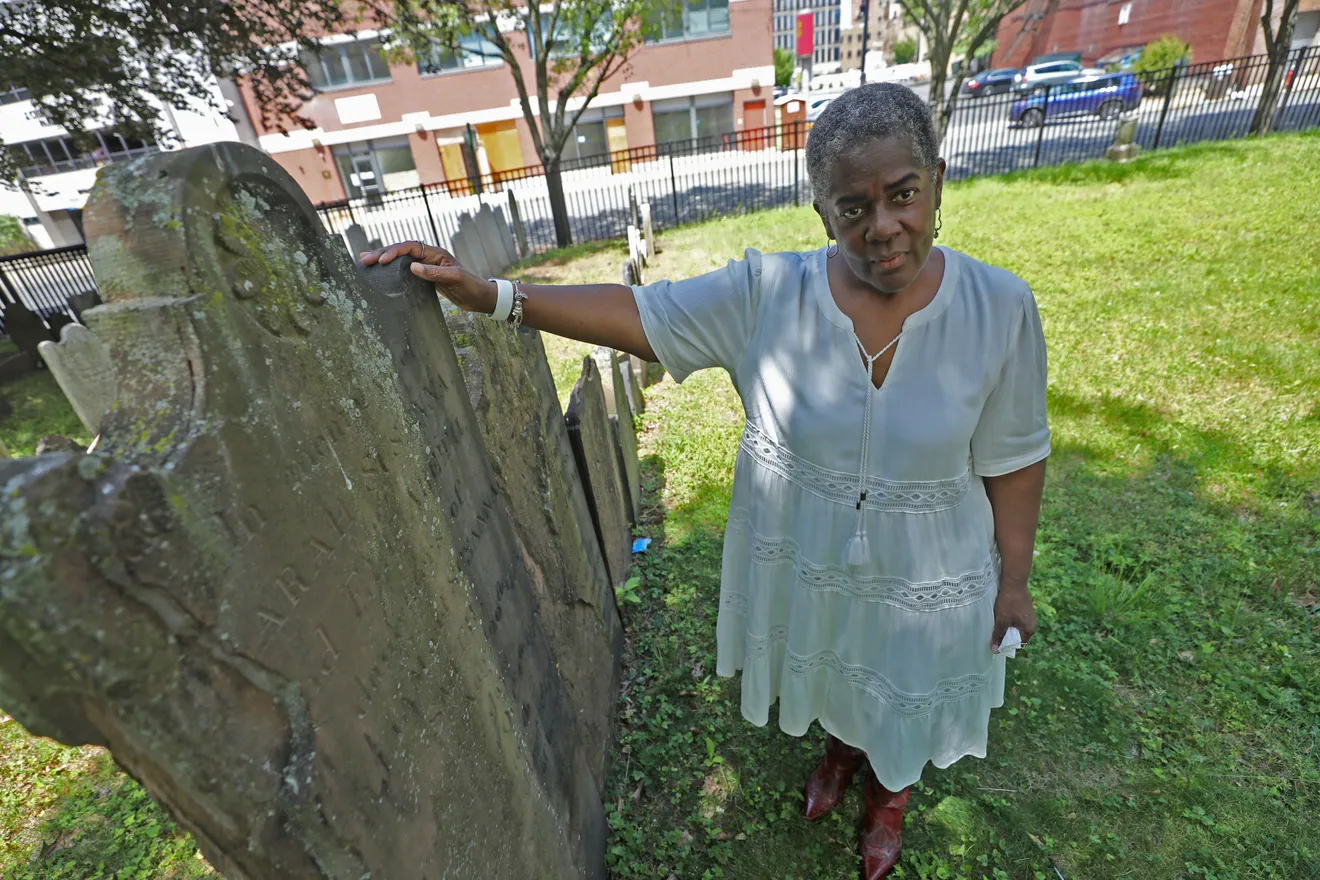
Rev. Dr. Wanda Lundy
Rev. Dr. Wanda Lundy, pastor of the Siloam Hope First Presbyterian Church in Elizabeth in an area where she wants to build a monument to remember the freed and enslaved Africans buried in unmarked graves in the church's historic cemetery. The headstones in the segregated cemetery mark the graves of whites who died. The cemetery has over 300 Africans buried from the 1700 and 1800’s in unmarked graves. Volunteers are trying to build a monument on the site that contains the most unidentified graves in honor of them and recognize the place where they were interned.
And there are dozens upon dozens of other African American burial grounds that have been recently discovered or are yet to be found.
Accessibility and awareness of these grounds would get a big boost from a bill pending in Congress known as the African American Burial Grounds Network Act. It would create an official database of historic Black burial sites. Among the bill’s other provisions would be grant opportunities and technical assistance for preservation of the burial grounds.
Such resting places are valuable in preserving the history of those long gone and in teaching researchers more about those who were not considered equal to their white counterparts in life and in death.
The Ancestors SPEAK
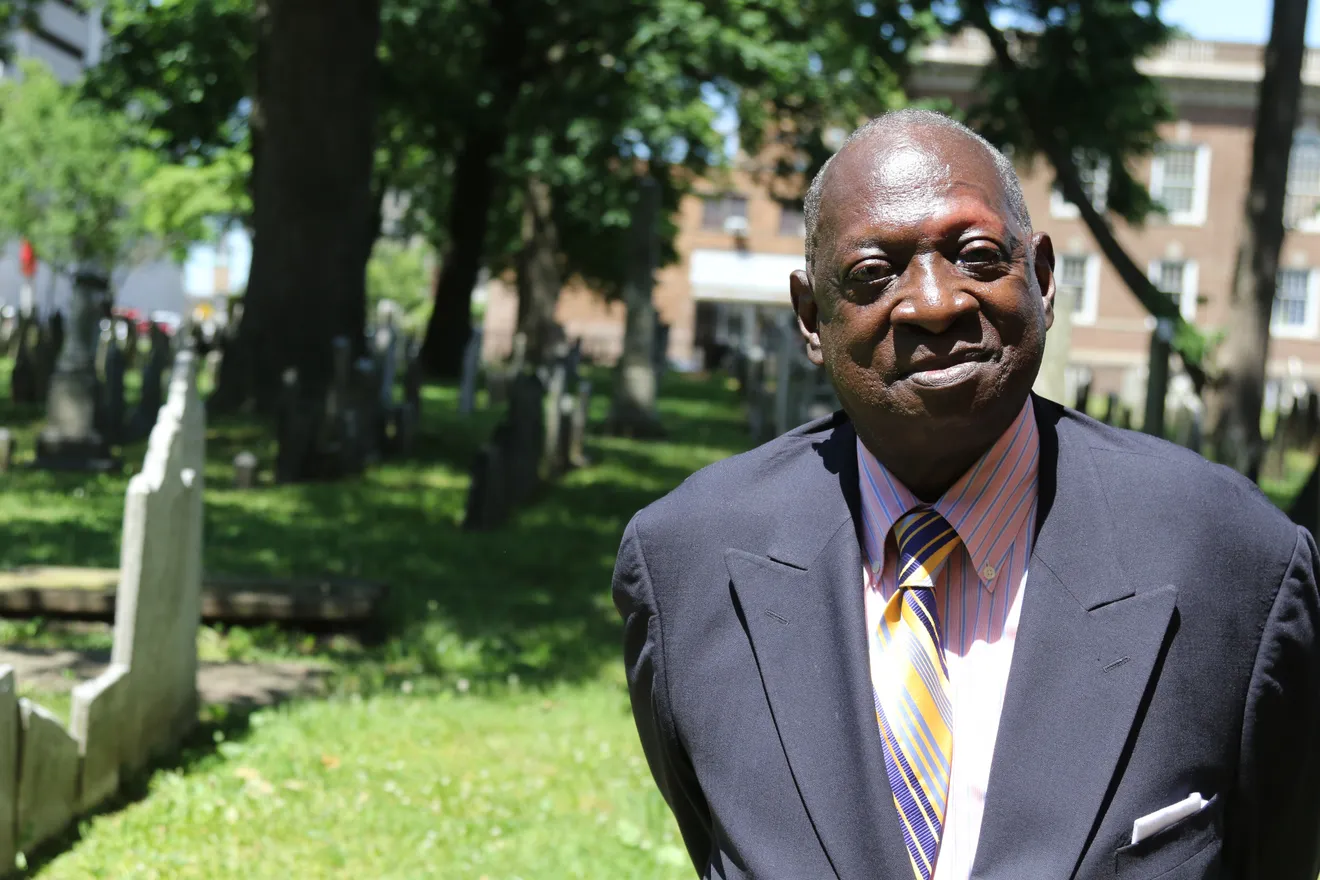
Church Member Leonard Jackson
Church member Leonard Jackson, who has relatives buried in this cemetery at the Siloam Hope First Presbyterian Church in Elizabeth in an area where volunteers want to build a monument to remember the freed and enslaved Africans buried in unmarked graves in the church's historic cemetery. The headstones in the segregated cemetery mark the graves of whites who died. The cemetery has over 300 African buried from the 1700 and 1800’s in unmarked graves. Volunteers are trying to build a monument on the site that contains the most unidentified graves in honor of them and recognize the place where they were interned. Chris Pedota, NorthJersey.com-USA Today Network
From Cape May to High Point, there are numerous African American cemeteries and other related burial sites that are reminders of New Jersey’s rich African American history. Depending on whom you talk to, there are at least 50 sites in the Garden State that are known. Many more are not known.
Some are places where the first Black families who settled in those areas are buried.
The Rev. Dr. Wanda Lundy, pastor of Siloam Hope First Presbyterian Church, is working with others to bring attention to the inhabitants of one of these resting places.
When she became pastor of the church in fall 2019, she found out about the 313 unmarked graves of freed and enslaved parishioners in the church’s cemetery. The resting grounds were used from the 1760s to the 1880s, when the faith house was known as the First Presbyterian Church of Elizabethtown, one of the oldest churches in the state.
“I couldn’t believe what I was hearing when I was told this, and I believe I heard the ancestors say they wanted their names to be called and they wanted their stories to be told,” Lundy said.
Since then, the 313 Project — started before she arrived — to honor those buried has become The Ancestors Speak research project as more bodies are believed to be buried in a grassy area in a corner of the cemetery surrounded by the gravestones, markers and obelisks of the white parishioners who worshipped at the church over the years.
Money is being raised for a monument to be placed at the site to recognize those buried, to let the world know they are there.
“What was fascinating to me, because I don’t live in this area, is that there were people who grew up in Elizabeth who did not know they were in the cemetery. They couldn’t believe it,” Lundy said.
Leonard Jackson Jr. is one of the Elizabeth natives who did not know about the ancestors buried at the back of the church in which he worshipped as a child. It wasn’t until a few years ago, when his mother provided a list of the names of the people believed to be underground, that he found that some were members of his own family.
“My mother gave me a list. I didn’t know what the list was … She handed me that list and she said don’t give this to nobody unless you can give this to somebody for educational purposes,” Jackson said. “I would say there were eight or nine members. Growing up, I went to this church and would pass by it on my way to school and I had no idea they were buried there.”
Finding out who is where
Clifford Brown was a native son of Wilmington who took the jazz world by storm with his trumpet in the 1950s in recordings with renowned musicians like Art Blakey and Lionel Hampton. Later he formed his own band.
Brown died in a car accident in 1956. He is buried in Mount Zion Cemetery in his hometown with a sizable sandy-colored gravestone near the front of the cemetery, on Lancaster Pike. But it turns out it is not his actual resting place — he is apparently buried somewhere else on the premises.
It is estimated that 1,000 people dating back to the Civil War are buried in Mount Zion, with 200 of them U.S. military veterans, according to the cemetery.
However, Judith Hearst, who serves on the Mount Zion Cemetery Association board, said a limited budget and the cemetery’s own complex history mean challenges remain in maintaining it and learning more about its inhabitants. The cemetery was founded in 1864 in the neighboring town of Elsmere and was relocated to its current site in the 1960s, Hearst said.
“Once it was moved, there’s no record of who is where,” Hearst said. “So we have family members calling looking for their grandfather, their husband or their parents. We had the Eagle Scouts come out and just do a mapping just to say here’s where all the graves are, but we don’t know who’s in what.”
There are some records of those buried on the grounds, Hearst noted, but most of them were destroyed in a fire years ago at the funeral home once responsible for most of the burials in Mount Zion.
Hearst also said there have been improvements to the cemetery. Volunteers on and off over the past 20 years have been restoring it, including adding a road system within it, installing a new fence near the entrance and new signage to make the cemetery visible, and ongoing landscaping.
Labor of LOVE
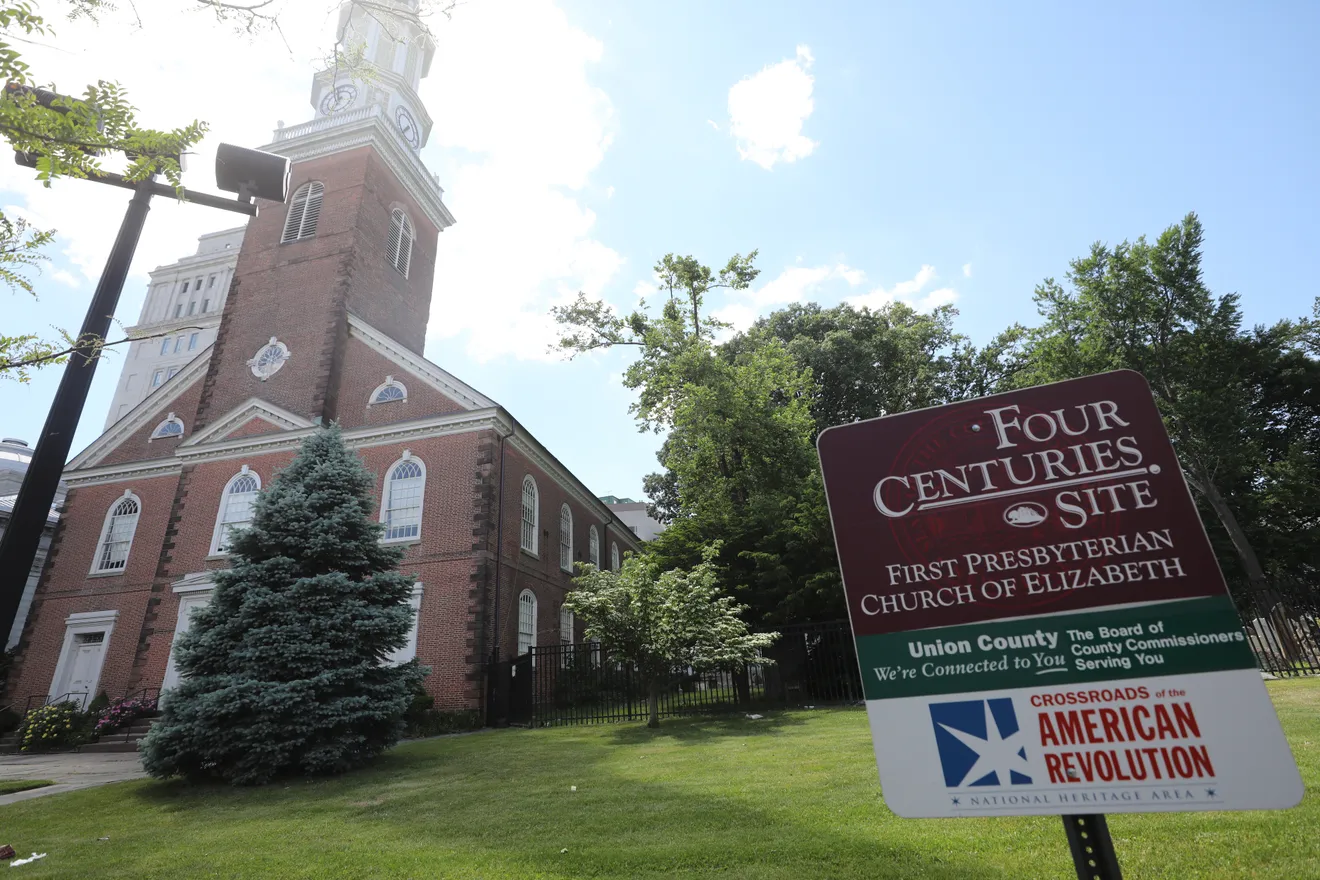
First Presbyterian Church
The historic cemetery at the First Presbyterian Church in Elizabeth has over 300 Africans buried from the 1700 and 1800’s in unmarked graves. Volunteers are trying to build a monument on the site that contains the most unidentified graves in honor of them and recognize the place where they were interned, separate from graves that contain the remains of white residents of Northern New Jersey. Chris Pedota, NorthJersey.com-USA Today Network
David Thomas hopes one day the majority of the 380 graves in Rye’s African American Cemetery will be identified.
“There are only 80 headstones, so most of the cemetery is filled with unmarked graves,” Thomas said. “We did find a plot map from the [Works Progress Administration] back in the 1930s. But that’s the only real idea of where the plots are.”
With that said, the cemetery — inside the Greenwood Union Cemetery, a 50-plus-acre burial site in two municipalities in New York’s Westchester County, and nearly the size of a football field — is in much better shape than it was when he was brought there over a decade ago by some descendants of those buried at the site.
A while after that visit, Thomas, who does not have any family at the site, in 2010 formed the Friends of the African American Cemetery. It works with descendants and other supporters to maintain the headstones and continue research and restoration of the cemetery.
The cemetery was formed in 1860 from land donated to the Westchester County town of Rye, which is adjacent to the city of the same name.
The people buried there include 30 veterans of the Civil War, the Spanish-American War and World Wars I and II. One of them is Samuel Bell, who served in the 54th Massachusetts Volunteer Infantry, one of the first Black military units of the Union Army during the Civil War.
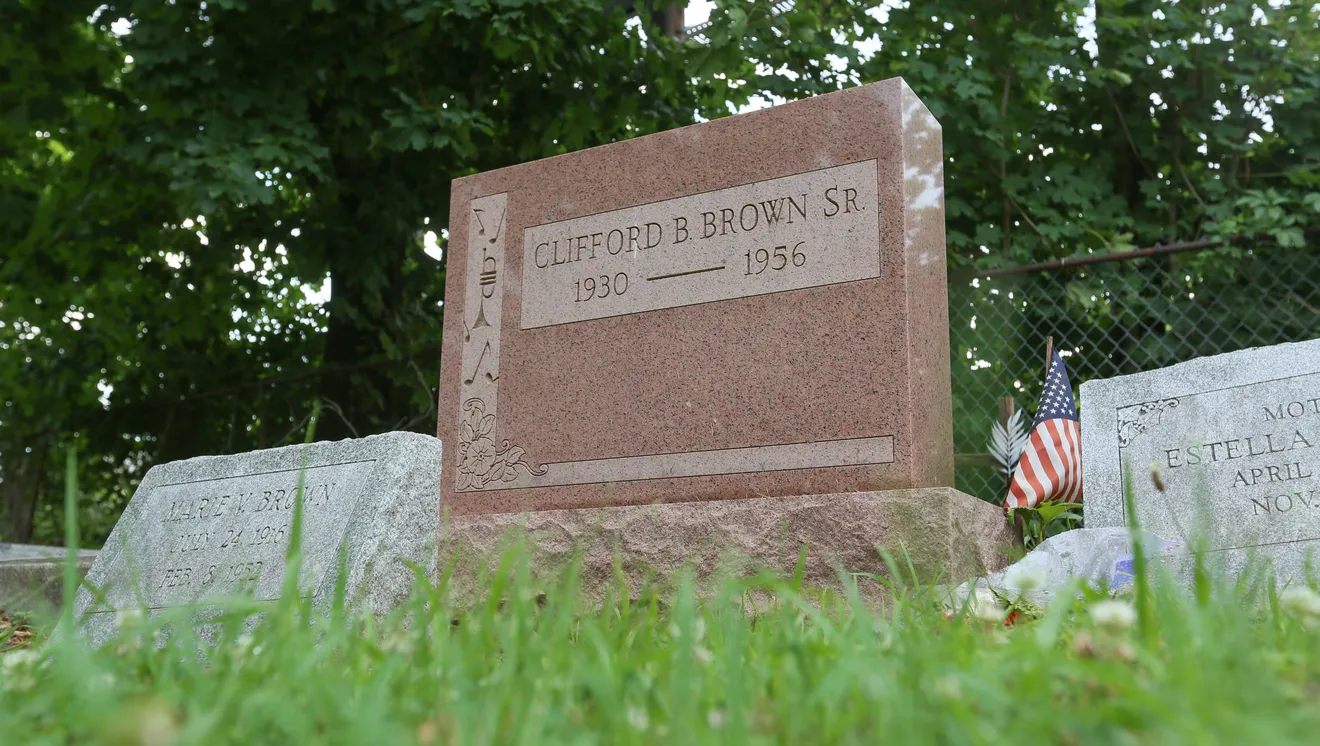
Clifford B. Brown Sr.
Jazz trumpeter Clifford Brown's gravesite at Mount Zion Cemetery in Wilmington, Del. as seen during the during the Clifford Brown Jazz Festival in 2016. - JENNIFER CORBETT/THE NEWS JOURNAL
Also buried there is Edwin Purdy, one of the founders of Barry Avenue AME Zion Church in Mamaroneck in 1852.
“We are always trying to make the site better with the help of the town, the city, the county, Boy Scouts and Girl Scouts with their Eagle Scout projects,” Thomas said. “It’s a labor of love, and from a history standpoint, there’s a lot of history there that is unknown, and we are bringing that to the forefront.”
And there are plans to honor those living and deceased who have helped in the upkeep of the cemetery with a ceremony Saturday, which is Juneteenth. Juneteenth marks the June 19, 1865, announcement of the abolition of slavery in Texas and the freeing of slaves throughout the Confederate South. It was just designated a federal holiday and has been a holiday in several states, including New Jersey and New York
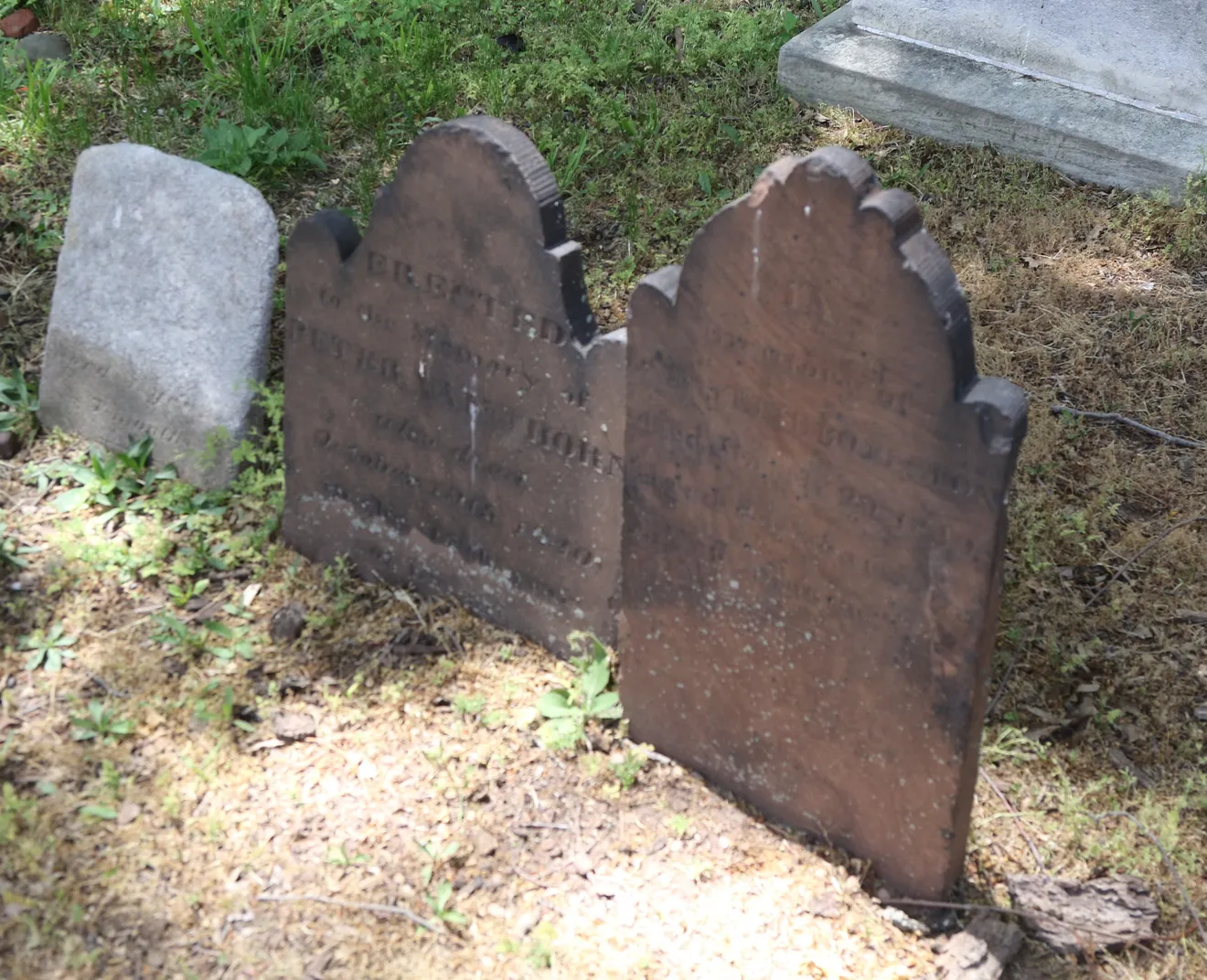
Lafayette Bolyston
The tombstone of Lafayette Bolyston, the only African buried with a headstone at the Siloam Hope First Presbyterian Church in Elizabeth. The word “Col’d” (colored) is engraved on the headstone. Most of the headstones in the segregated cemetery mark the graves of whites who died. The cemetery has over 300 Africans buried from the 1700 and 1800’s in unmarked graves. Volunteers are trying to build a monument on the site that contains the most unidentified graves in honor of them and recognize the place where they were interned. - Chris Pedota, NorthJersey.com-USA Today Network
What started in 2019 as a volunteer cleanup of the Lebanon Cemetery on North George Street in the heart of York has now evolved into an extensive effort to find out more about who is buried in one of the oldest African American cemeteries in Pennsylvania. It opened in 1872.
The burial ground has more than 270 veterans from the Civil War through the Vietnam War, including the first York City resident to die in the Korean War: Roger Ballard.
Tina Charles, whose husband has at least 50 relatives interred in the cemetery, and Samantha Dorm, who also has family buried there, are among the volunteers who founded the Friends of the Lebanon Cemetery.
In the past two years this group has tried to remedy problems with the 149-year-old burial site. They found that the cemetery did not have a board of directors for 10 years, hadn’t filed the tax returns required from nonprofits, had been selling grave plots without a license and was not registered with the state bureau that regulates cemeteries.
The cemetery has since formed a new operation board that is looking to be incorporated.
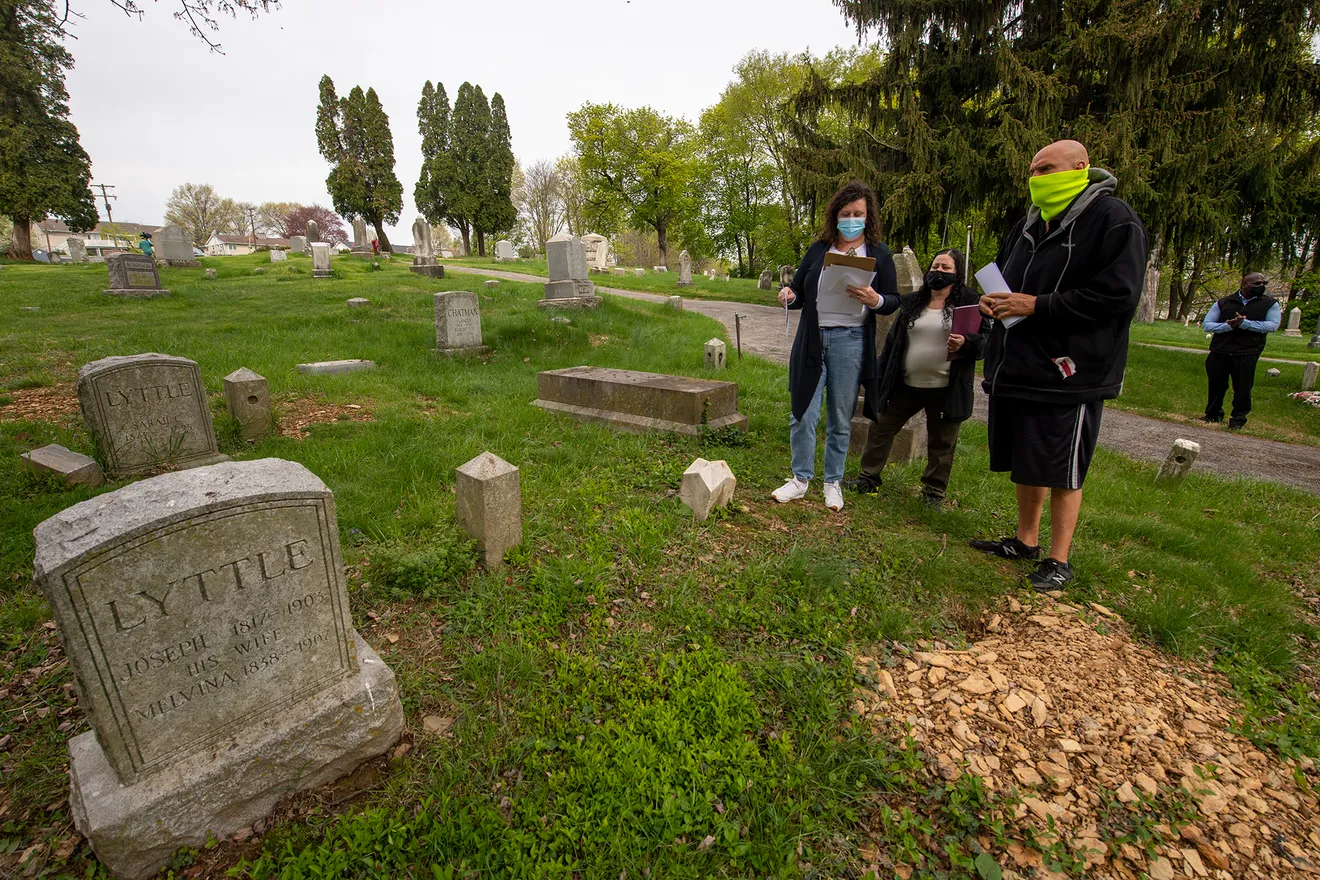
Tina Charles
Tina Charles, left, leads a tour for Lieutenant Governor John Fetterman, right, at Lebanon Cemetery in North York Monday April 19, 2021. - Paul Kuehnel, York Daily Record
The Friends group in April invited the state’s Lt. Gov. John Fetterman for a walking tour to help them with various issues impeding their efforts to preserve the cemetery. They include the appointment of an official to oversee state cemetery laws and the spreading of information about family rights and protection related to burials.
Charles said the efforts of the Friends to help preserve the cemetery and learn more about the people buried there has been a “very humbling experience.”
“It’s sometimes an emotional roller coaster in the uncovering,” Charles said. ‘We have been known to uncover physically headstones and the like. But we also uncover the history; we uncover the stories of the people interred there and their significant contribution to York City at the time.”
Documenting the cemeteries
Initially introduced in the U.S. House of Representatives in 2019 by Rep. Alma Adams, D-N.C., and Rep. Donald McEachin, D-Va., the African American Burial Grounds Network Act was then introduced in the U.S. Senate, where it was passed in December and was sent back to the House to await a formal vote, but none has been scheduled so far this year.
This bill is vital in helping to answer the question: How many African American burial sites are there in each state?
Cherikana Feliciano, the vice president of the New Jersey Chapter of the Afro American Historical & Genealogical Society, has embarked on visiting black cemeteries across New Jersey to put together a database of these sites.
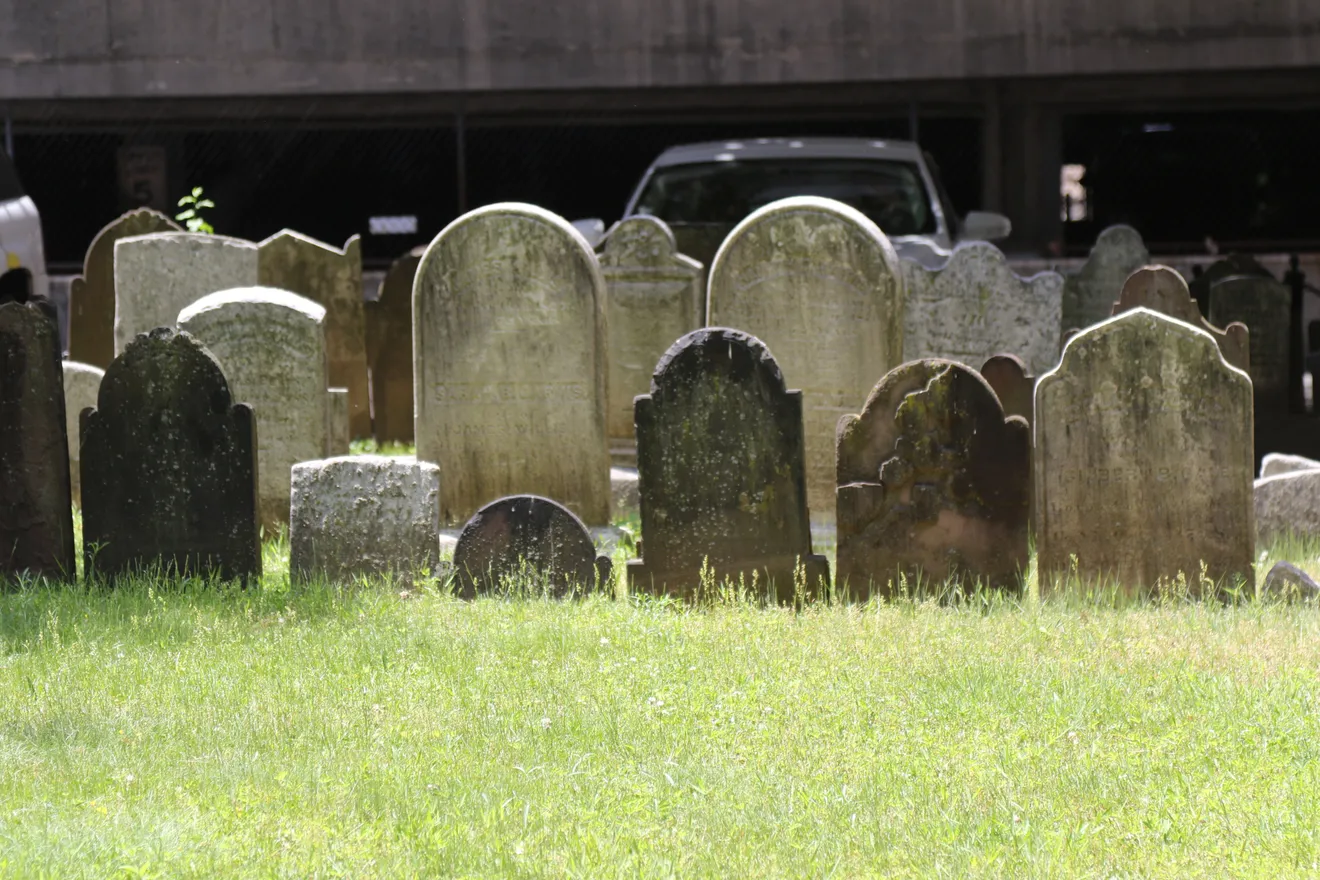
The historic cemetery
The historic cemetery at the First Presbyterian Church in Elizabeth has over 300 Africans buried from the 1700 and 1800’s in unmarked graves. Volunteers are trying to build a monument on the site that contains the most unidentified graves in honor of them and recognize the place where they were interned, separate from graves that contain the remains of white residents of Northern New Jersey. - Chris Pedota, NorthJersey.com-USA Today Network
She said the visits have given her a deeper appreciation of the state’s African American history, which she hopes others glean when learning about these cemeteries.
“It’s very intimately linked with the Underground Railroad, abolition work as well as a deeper appreciation for the AME Church and its connection to Black history and Black culture in New Jersey,” Feliciano said.
Dr. Lynn Rainville, director of Institutional History and the Museums and a professor of anthropology at Washington and Lee University in Lexington, Virginia, said the congressional bill solves significant problems that have affected African American burial grounds, such as grave robbing for medical purposes.
“This bill gets to exactly what some of the problems are, which is that these sites don’t always receive the same support and protections of white cemeteries,” Rainville said.
This article was originally posted here

